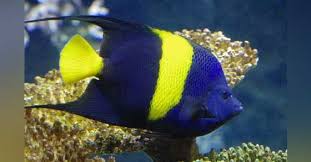Dragons and the Development of Pop Culture in China: A Symbolic Evolution

Dragons have long been an essential part of Chinese culture, representing strength, power, and good fortune. In Chinese mythology, the dragon is a symbol of imperial authority, the natural world, and auspiciousness. As Chinese pop culture has evolved over the years, dragons have remained central to its identity, adapting to new forms of media, art, and entertainment. This article explores the role of dragons in the development of pop culture in China, from traditional folklore to modern-day representations in films, television, video games, and more.
The Origins of the Dragon in Chinese Culture
The dragon in Chinese culture, known as “long” (龙), has a rich and complex history. Unlike in Western cultures, where dragons are often portrayed as fearsome creatures to be slain, Chinese dragons are considered benevolent and auspicious beings. They are deeply intertwined with Chinese cosmology, representing elements of water, weather, and natural forces. In imperial China, the dragon was a symbol of the emperor, embodying imperial power, strength, and divine right.
Historically, the dragon was a central figure in Chinese art, literature, and religion. Its image appeared in ancient tombs, pottery, and temples, symbolizing both protection and vitality. As time passed, the dragon became a fixture in Chinese folklore, revered as a guardian spirit and a bringer of rain and prosperity.
Dragons in Traditional Chinese Pop Culture
Before the 20th century, dragons were primarily seen in traditional Chinese art, literature, and folklore. They appeared in classical Chinese novels, poems, and operas, often depicted as wise, ancient creatures with immense power. One of the most famous literary works in which dragons play a central role is the Classic of Mountains and Seas (Shan Hai Jing), a compilation of mythic geography and tales from ancient China. Dragons in this text are depicted as protectors of natural forces, guarding rivers, mountains, and other sacred places.
In Chinese opera, dragons were also symbolic figures in traditional performances. Peking opera, for example, often included dragon motifs in its costumes and choreography, showcasing the creature’s importance as a cultural symbol. These performances were not only entertaining but also served as a way to educate the public about traditional values, with the dragon often representing the emperor’s authority or the forces of nature that needed to be appeased or controlled.
The Emergence of Modern Chinese Pop Culture and the Dragon
The advent of the 20th century brought significant cultural shifts in China, particularly with the rise of Western influence and the modernization of Chinese society. The introduction of new forms of entertainment, including cinema, television, and comic books, changed the way dragons were represented. The dragon’s role in Chinese culture began to evolve as these new media forms gained popularity.
1. Early Chinese Cinema and the Dragon
In the early years of Chinese cinema, dragons continued to play an important role, often appearing in wuxia (martial arts) films and historical dramas. Wuxia films, which tell stories of martial heroes, often featured supernatural elements, including dragons, as symbols of power or mystical beings with unique abilities.
In the 1930s and 1940s, dragons were commonly featured in Chinese fantasy films. These films were influenced by both traditional Chinese mythologies and Western adventure films, and dragons were often portrayed as guardians or antagonists with magical powers. For example, films like The Dragon Gate Inn (1967) and The Magic Sword (1962) portrayed dragons as fierce adversaries that heroes had to confront, reinforcing their role as symbols of both danger and mystery.
2. The Role of the Dragon in Chinese Animation and Comics
As China’s entertainment industry expanded, dragons began to take on new roles in animation and comics, particularly during the late 20th century. The rapid growth of the Chinese animation industry in the 1980s and 1990s saw the introduction of dragon characters that appealed to a younger, more diverse audience. These dragons were often less fearsome and more friendly, embodying qualities of playfulness, humor, and loyalty.
Chinese animated series such as The King’s Avatar and White Snake (based on the popular legend) showcased dragons as central characters, often with complex personalities and emotional depth. In these stories, dragons represented more than just power; they also symbolized the deep connections between humans and mythical creatures, highlighting themes of love, loyalty, and self-discovery.
Comics, known as manhua in China, also embraced dragons as key figures in their storytelling. The 1990s saw the rise of the “dragon hero” archetype, which became a staple in Chinese comics. These heroes were often depicted as dragons with human characteristics, bridging the gap between the traditional dragon image and the modern, relatable hero.
3. Dragon Influence in Chinese Television
Television in China has been instrumental in shaping contemporary pop culture, and dragons have had a notable presence in TV shows over the years. Dragon-themed storylines became particularly popular in the 2000s with the rise of Chinese fantasy dramas and historical epics. These shows often blended traditional myths with modern storytelling techniques, bringing dragons into the fold of Chinese fantasy television.
One of the most famous examples is Journey to the West, a story based on the classic Chinese novel of the same name, in which the Monkey King, one of the main characters, has a long-standing relationship with the Dragon King of the Eastern Sea. In the 2010s, Journey to the West was adapted into several highly successful television series and films, once again showcasing the enduring appeal of the dragon as both a mystical and cultural figure.
More recently, the 2017 series The King’s Woman incorporated the dragon motif in the portrayal of ancient Chinese royalty and mythical creatures, demonstrating how dragons are still significant in modern narratives and continue to resonate with contemporary Chinese audiences.
Dragons in Modern Chinese Pop Culture: A Global Phenomenon
As China’s cultural influence has grown globally, so too has the presence of dragons in its pop culture. In recent years, dragons have transcended their traditional role in Chinese mythology and become symbols of Chinese pop culture worldwide, especially in the context of Chinese cinema, video games, and international collaborations.
1. Dragons in Chinese Films
China’s film industry has rapidly expanded in the 21st century, and dragons have remained central to many blockbuster movies. In films like The Monkey King (2014) and Dragon Blade (2015), dragons are powerful symbols that represent both ancient wisdom and imperial strength. These films often blend mythology with historical fiction, showcasing dragons as protectors of the empire or as forces of nature that shape the outcome of battles.
One notable example is the 2017 film The Great Wall, directed by Zhang Yimou. Though dragons do not physically appear in the film, their cultural influence is evident. The story of defending the Great Wall from mythical creatures draws heavily from the symbolism of the dragon, reinforcing the connection between the mythical creature and the protection of the nation. Dragons in Chinese films are often linked with national pride, ancient wisdom, and an idealized view of Chinese history.
2. The Role of Dragons in Video Games
China has become a powerhouse in the global video game market, and dragons play a significant role in many of the most popular games developed by Chinese companies. Dragons are featured in games such as League of Legends, Honor of Kings, and World of Warcraft (though the latter is a Western-developed game, it has a large player base in China). In these games, dragons are often portrayed as powerful, legendary creatures with special abilities, symbolizing both the danger and allure of the fantastical worlds players engage with.
Chinese game developers have also created games specifically centered around dragon lore. Games like Dragon Nest and Age of Wushu integrate dragon symbolism into their gameplay, character design, and narratives, offering players a chance to engage with Chinese mythology in a digital space. In these games, dragons represent both strength and the potential for transformation, serving as guides or challenges for players to overcome.
3. Dragons in International Collaborations
As Chinese pop culture continues to influence the global stage, dragons have become a key part of international cultural exchanges. Hollywood has often turned to Chinese mythology for inspiration, with dragons becoming a symbol of China’s growing cultural presence in global entertainment. Films such as Kung Fu Panda 3 (2016), produced by DreamWorks Animation, feature Chinese dragons as central characters, reflecting the enduring appeal of dragons in both Eastern and Western cultures.
Dragons as a Symbol of Modern Chinese Identity
In today’s rapidly changing world, dragons remain a significant cultural symbol for China, both within the country and abroad. As China continues to assert its influence on the global stage, dragons serve as a reminder of the nation’s rich cultural heritage, its mythical past, and its modern aspirations. They are symbols of power, resilience, and transformation, representing the continued evolution of Chinese pop culture.
From their traditional roots in ancient mythology to their modern-day representations in films, television, and video games, dragons have adapted and thrived in China’s pop culture landscape. They have become iconic figures, transcending cultural boundaries and resonating with audiences around the world. The legacy of the dragon in Chinese culture is one of enduring strength, and as Chinese pop culture continues to evolve, the dragon will remain an indelible symbol of the nation’s rich past and dynamic future.
